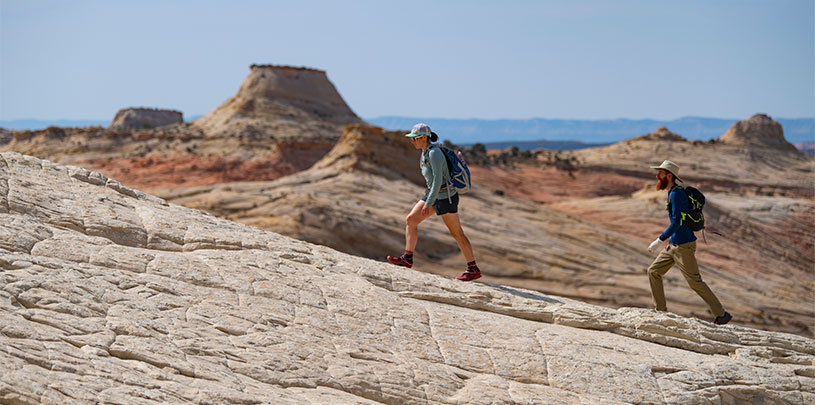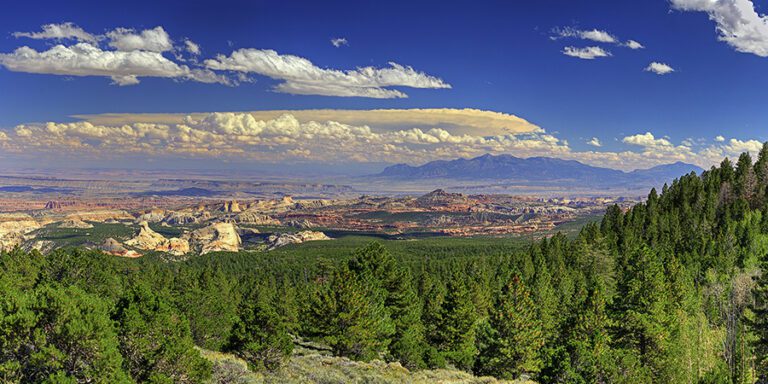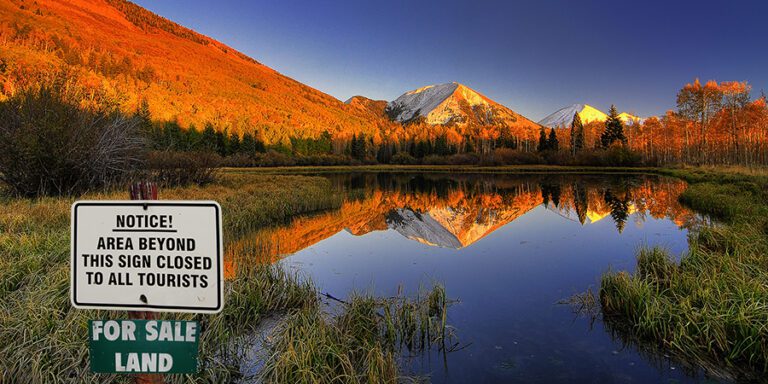
The plan to protect old-growth forests, creeks, canyons, fossils, and more in Grand Staircase-Escalante National Monument.
In the canyon country of southern Utah, the Escalante River has sliced and carved through ancient petrified sand dunes on its way to the Colorado River. This sculpted landscape, protected as Grand Staircase-Escalante National Monument today, holds geologic wonders like dinosaur fossils, sandstone arches, and slot canyons; vibrant creeks and springs; over 200 species of birds; and many other creatures large and small. Its human history spans eons, and the Indigenous peoples who have called this landscape home since time immemorial maintain cultural connections to this place today.
First designated a national monument in 1996, Grand Staircase-Escalante has served as a source of new scientific findings, a refuge for those seeking solitude, and a critical natural reserve. The Bureau of Land Management, the agency that oversees the monument, has been working to update its long-term vision for how to care for the monument’s lands, waters, and cultural heritage. In August 2024, the agency released its proposed management plan, a guiding document that makes decisions about on-the-ground issues, such as how native plants and animals will be protected, and where cattle grazing and off-road vehicle use will be permitted.
What’s good about the plan?
It protects native plants
From canyon floors filled with cottonwood trees and willows, to hanging gardens of maidenhair ferns and orchids, to grassy plateaus punctuated by pinyon and juniper trees, Grand Staircase-Escalante boasts an incredible variety of habitats for plants to grow. The proposed management plan commits to protecting and restoring native plants across the monument, a positive step forward since half of Utah’s rare plant species take refuge in Grand Staircase-Escalante, and more than 1,000 plant species call the monument home.
It protects fragile soils
Biological soil crusts cover vast swaths of Grand Staircase-Escalante. These living carpets — made of cyanobacteria, mosses, and lichens — prevent erosion and support plant growth. The proposed management plan commits to protecting these fragile soils that are easily crushed by cattle, off-road vehicles, and visitors.
It protects sensitive waterways from cattle
Cattle grazing is permitted across the vast majority of monument lands. Scarce water sources in the monument are particularly susceptible to the impacts of cattle. The new management plan keeps cows out of sensitive waterways like the Escalante River and its tributaries and much of the Paria River within the monument boundaries.
It provides a framework to pay ranchers who give up grazing permits
The management plan allows for win-win agreements that benefit ranchers while helping to restore the health of monument lands. Ranchers can receive compensation in exchange for giving up a grazing permit. In return, water sources, soils, and plants in these areas can recover. With time, these lands can provide important habitat for bees, birds, bighorn sheep, and many other species of wildlife.
In areas where the Grand Canyon Trust previously facilitated voluntary grazing permit relinquishments, the results have been dramatic. Allowed to recover for decades, canyons and creeks have transformed into lush oases. The proposed management plan keeps these areas closed and provides a framework for future deals.
It balances different types of recreational experiences
As more and more hikers, campers, and road trippers head to Grand Staircase-Escalante each year, balancing the impacts of recreation with land protection is a growing challenge. The proposed management plan allows for highway scenic overlooks, developed campgrounds, maintained trails, and visitor centers in areas that are easy to access and are more resistant to damage. Other areas of the monument are set aside for visitors to enjoy on foot or on horseback.
Overall, the plan accommodates a range of activities, from sleeping under the stars, to squeezing through slot canyons, to scenic driving tours.
What could be better about the plan?
While the proposed plan takes positive steps forward in protecting the monument, we are also advocating for additional improvements before the plan is finalized early next year.
Protections for old-growth forests and pinyon jays
The original 1996 proclamation creating Grand Staircase-Escalante singles out ancient pinyon and juniper trees as many as 1,400 years old for special protection. These slow-growing trees are important to many species of wildlife, including the declining pinyon jay. Old-growth pinyon and juniper forests can be clear-cut under the current plan. We’re asking the Bureau of Land Management to strengthen protections for old growth and mature trees of all kinds by prohibiting their destruction in its final management plan.
Restrictions on non-native seeds
Historically in Grand Staircase-Escalante, after forests have been leveled, they’ve been seeded with nonnative plant species whose primary purpose is to feed cattle. We’re asking the Bureau of Land Management to limit the use of nonnative seeds and to stop converting forests into grasslands dominated by species from the other side of the globe.
Restrictions on target shooting
Under the proposed plan, target shooting is allowed almost everywhere in Grand Staircase-Escalante. This can result in people shooting at petroglyphs, pictographs, and other resources that are supposed to be protected. In addition, people have left targets that are difficult to remove, like shot-up refrigerators and large piles of shell casings, that litter the landscape. We’re asking the Bureau of Land Management to restrict where target shooting is allowed to better protect the monument’s values.
The Trust, along with many partners, has engaged extensively in the development of this plan through multiple rounds of public input. The improvements above are crucial to properly protect the spectacular lands that comprise Grand Staircase-Escalante National Monument. The Trust has been a strong advocate for the monument since its inception, and we will continue to advocate for its protection as the plan is finalized.
Your help is integral to ensure that this magnificent landscape is responsibly managed long into the future. We hope you will stand with us in protecting Grand Staircase-Escalante.







